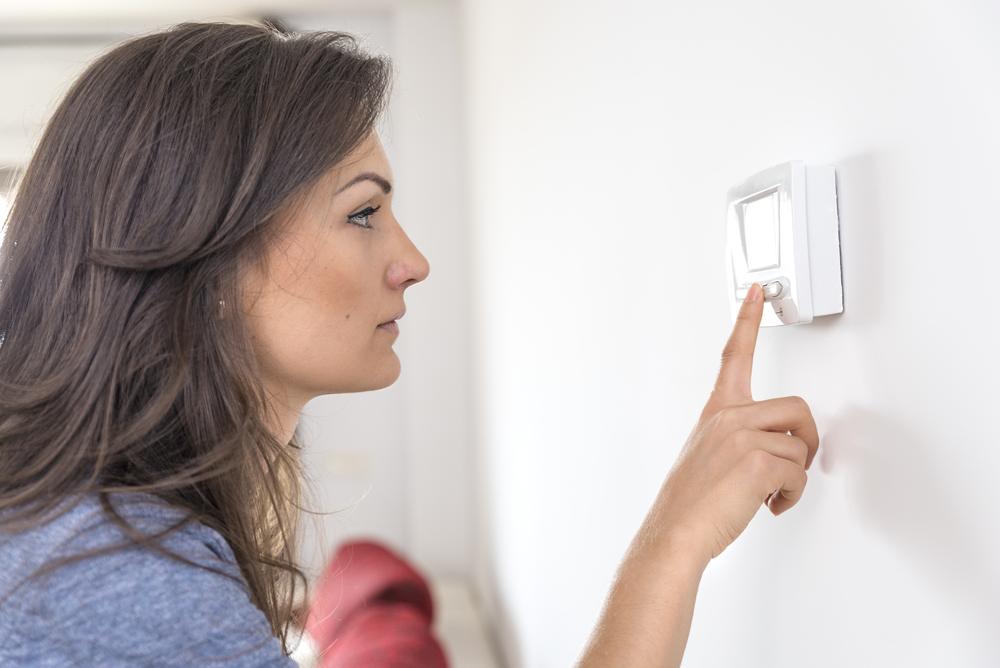6 Tips on How To Save On Gas Bills in the Fall

Leaves are falling, the sun is setting earlier, and a cup of hot tea sounds like a great idea right about now. Fall has officially arrived and many of us are enjoying the cozy atmosphere of our warm rooms inside while rain is falling and winds are blowing on the outside.
With the cozy atmosphere, however, comes a not-so-cozy gas bill that seems to be growing every month due to increased heat usage. You might think there is nothing you can do about it, but here are six tips on how to save on gas bills in the fall.
1. Find and Seal Openings
Some openings, like cracks between doors and the floor, are more obvious than others. Yet, all of them contribute to an increased gas bill because the heat you are generating can escape your home without you even noticing.
So set aside some time to walk around all floors of your home to discover any cracks and openings that might let your warm air escape to the outside (pay special attention to the attic, basement and crawl spaces … even electric outlets in some cases).
Once discovered, you can seal those openings – depending on the kind of crack – either by using caulk, weather-strips, spray foam, or draft guards. Also, if you’re not planning to use your chimney, consider closing the damper to keep the warm air inside.
2. Install a Programmable Thermostat
If you don’t have one already, you might want to consider installing a programmable thermostat, because it can automatically reduce heating and cooling in your home based on the temperatures you desire. This is way more energy-efficient than manually switching heaters (or air-conditioners) on and off, because the thermostat can more precisely and efficiently determine how much gas and energy is needed to maintain consistent temperatures.
Look for thermostats that not only let you set temperatures, but also certain timeframes during which different temperatures might be appropriate (e.g. when you are asleep at night, you don’t need to keep heating.) You might also consider a thermostat with location-based functions, so that you can, for example, keep heating your bedroom at night while the heat is switched off throughout the rest of the house.
Interesting fact: for every degree you lower your heat between 60 and 70 degrees Fahrenheit, you can save up to 5% on heating costs (and up 3% outside the 60-70 range).

3. Insulation
Wherever water (or warm air) comes in touch with surrounding cold air, you should consider installing insulation. These places might include water pipes as well as the heater itself. Make sure to consult with a technician to avoid putting yourself in danger by causing equipment to overheat. (Either way, leave any air intake vents uncovered!)
Insulation can help reduce heat loss and energy waste resulting in up 10% savings on your next energy bill. Also, once your pipes are properly insulated, you won’t have to wait as long for hot water to arrive at your faucets … and who wouldn’t want that?!
4. Clean Filters and Vents
While sealing cracks, programming a thermostat, and installing insulation might be more fun, cleaning filters and vents on a regular basis are just as important.
That’s because, once dirty, they allow less air to flow through due to dust and debris taking up space and clogging the system. If you are no longer able to clean a filter, it is time to replace it altogether with a new one.
According to REALTORS.COM, keeping your system clean not only increases your overall energy efficiency by up to 10%, but it also extends the life of your equipment.
5. Shades
Shades mostly have two main functions: 1) block light, and 2) keep the heat inside. The second function is already a tip on how to save on gas costs; but only at night.
During the day, when the sun is shining, you want to make sure to leave shades on south-facing windows wide open, as sunlight is a natural – and free – source of heat. At night, keep all shades closed to reduce escaping of warm air.
6. Move Your Furniture
Because interior walls don’t come in touch with exterior temperatures, they tend to store and reflect heat for much longer periods of time than exterior walls do.
To take advantage of this “free” heat, consider rearranging your furniture so you end up sitting near interior walls during fall and winter.
While these six tips will give you a head start in saving on gas bills, you might also consider giving Homeselfe’s mobile app a try, because it not only creates a useful digital mock-up of your home, but also guides you through the key areas that contribute to your energy bill.


